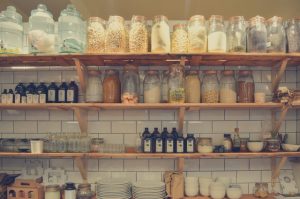Retail has existed for a long time and something we know is that there are lots of distinct approaches when it comes to retail layout and establishing your shop design. But, in addition, there are some frequent design plans that all retailers may use that contribute to greater sales for your small business.
Unclear where to begin with your shop design and retail layout? Here, we will take a look at a few of the fundamentals when it comes to retail interior design that brings more clients to your shop, get them searching for more products, and also invite them to go toward the checkout.
Focus on the Threshold
The threshold region, also called the “decompression zone,” is your very first space that potential shoppers see when they enter your store. It is the area where your clients make the transition from the external world and experience what you’ve got to offer.
It’s at this point where shoppers also make crucial decisions such as how inexpensive or expensive your shop is very likely to be and just how well coordinated your fixtures, lighting, displays and colours are. Since they are at a transition mode, clients are more likely to overlook any item or signage.
Have Shoppers Walk a Trail
As a store owner, you can utilise furniture, screens and shelves, along with other tools to make a  clear path for your clients through your shop with an interior stylist. This may vary greatly based on how big your overall store space is. Your next task is to make sure they also keep walking throughout your shop to acquire the most exposure to your goods. This not only raises the odds of them making a purchase however a well-thought-out path may be a fantastic approach to subtly control the ebb and flow of foot traffic through your shop.
clear path for your clients through your shop with an interior stylist. This may vary greatly based on how big your overall store space is. Your next task is to make sure they also keep walking throughout your shop to acquire the most exposure to your goods. This not only raises the odds of them making a purchase however a well-thought-out path may be a fantastic approach to subtly control the ebb and flow of foot traffic through your shop.
Another strategy to remember is that you would like to use the route to direct your clients someplace. Therefore, by way of instance, look at putting an eye catching and attention-grabbing item at the conclusion of your aisles.
Slow Them Down
With all the time and effort, you have placed into correctly positioning and advertising your goods, the very last thing you need is for incoming clients to rush past them, this finally restricts the amount of goods they will buy. One method retailers use to fight this is through producing breaks that induce them.
But, even if your shop does not possess store aisles, it is still important to consider grouping merchandise in a means which is reasonable from the perspective of the shopper. Ensure high turnover goods and products are placed at eye-level whilst putting lower-grossing products either below or higher. Last, it’s suggested that you switch these speed bumps every week or frequently enough to produce a continuing awareness of novelty for repeat traffic.
Maintain Comfort for Shoppers
You may already know about something called the “butt-brush effect,”. This effect describes the process of a normal client, particularly women, who will prevent going after a product within an aisle where they could brush another client’s buttocks or be brushed past themselves. This is true even when the client is quite interested in a specific product. A simple way to prevent this dilemma is to make sure your aisle, flooring, and screens permit clients to get more than sufficient personal space when surfing your merchandise.
You can make your shop comfortable by integrating a waiting place with comfortable chairs and seats to encourage clients to invest more time on your shop. This is particularly beneficial for shoppers followed by somebody who isn’t interested in purchasing anything. But keep the chairs or chairs facing the product so they’re top of mind to all those lounging around on your shop. Whether you find a designer through word of mouth or search online for interior design, make sure your choice has a successful retail history.
Continually Evolving Your Shop Layout and Retail Design
Planning your store interior is a never-ending procedure at which you can continually be shifting up, tweaking, adding, or taking off to make a resonating client experience and satisfaction. Help yourself by creating relationships with interior styling services. But when it’s all said and done, the customer’s experience and satisfaction is just what you wish to concentrate on.
Walk-through the store yourself from the customers perspective and determine where the visual cues guide you or get your employees, friends, or family to do the exact same and provide you honest feedback. Do not forget to watch your customers and see what they are attracted to, and the way they proceed, then match with your planned design. If you keep your eyes and ears open, you will make sure to make a retail layout that is a win-win for you and for your clients.


